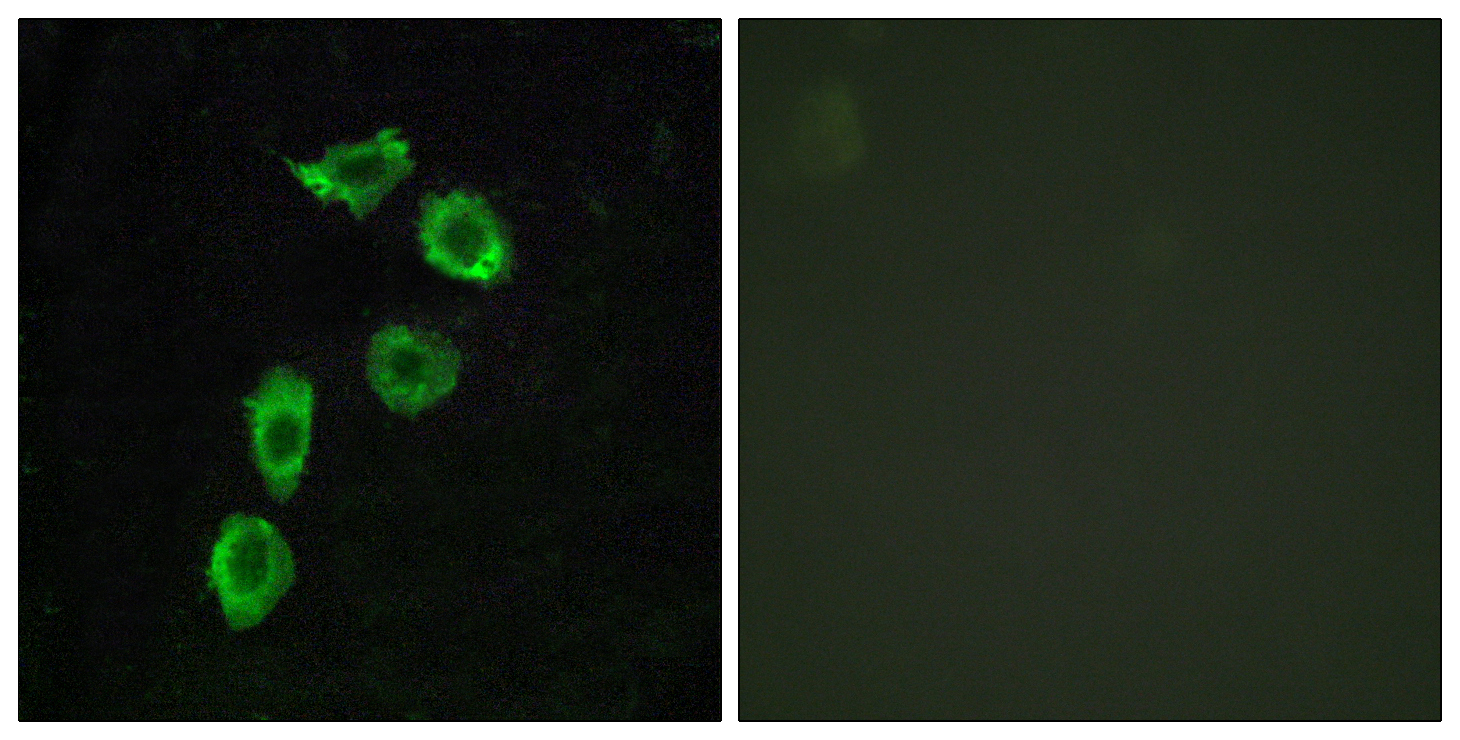GPR123 Polyclonal Antibody
- Catalog No.:YT1965
- Applications:IF;ELISA
- Reactivity:Human;Rat;Mouse;
- Target:
- GPR123
- Gene Name:
- GPR123
- Protein Name:
- Probable G-protein coupled receptor 123
- Human Gene Id:
- 84435
- Human Swiss Prot No:
- Q86SQ6
- Immunogen:
- The antiserum was produced against synthesized peptide derived from human GPR123. AA range:201-250
- Specificity:
- GPR123 Polyclonal Antibody detects endogenous levels of GPR123 protein.
- Formulation:
- Liquid in PBS containing 50% glycerol, 0.5% BSA and 0.02% sodium azide.
- Source:
- Polyclonal, Rabbit,IgG
- Dilution:
- IF 1:200 - 1:1000. ELISA: 1:5000. Not yet tested in other applications.
- Purification:
- The antibody was affinity-purified from rabbit antiserum by affinity-chromatography using epitope-specific immunogen.
- Concentration:
- 1 mg/ml
- Storage Stability:
- -15°C to -25°C/1 year(Do not lower than -25°C)
- Other Name:
- GPR123;KIAA1828;Probable G-protein coupled receptor 123
- Molecular Weight(Da):
- 137kD
- Background:
- This gene encodes a protein that belongs to the adhesion family of G-protein-coupled receptors. Members of this family function in several sensory systems and regulate blood pressure, immune responses, food intake and development. A similar protein in rodents is thought to play a role in in the regulation of neuronal signaling pathways. Several alternatively spliced transcript variants of this gene have been described, but the full-length nature of some of these variants has not been determined. [provided by RefSeq, Mar 2014],
- Function:
- function:Orphan receptor.,similarity:Belongs to the G-protein coupled receptor 2 family. LN-TM7 subfamily.,
- Subcellular Location:
- Membrane ; Multi-pass membrane protein .
- Expression:
- Brain,
- June 19-2018
- WESTERN IMMUNOBLOTTING PROTOCOL
- June 19-2018
- IMMUNOHISTOCHEMISTRY-PARAFFIN PROTOCOL
- June 19-2018
- IMMUNOFLUORESCENCE PROTOCOL
- September 08-2020
- FLOW-CYTOMEYRT-PROTOCOL
- May 20-2022
- Cell-Based ELISA│解您多样本WB检测之困扰
- July 13-2018
- CELL-BASED-ELISA-PROTOCOL-FOR-ACETYL-PROTEIN
- July 13-2018
- CELL-BASED-ELISA-PROTOCOL-FOR-PHOSPHO-PROTEIN
- July 13-2018
- Antibody-FAQs
- Products Images

- Immunofluorescence analysis of HUVEC cells, using GPR123 Antibody. The picture on the right is blocked with the synthesized peptide.



